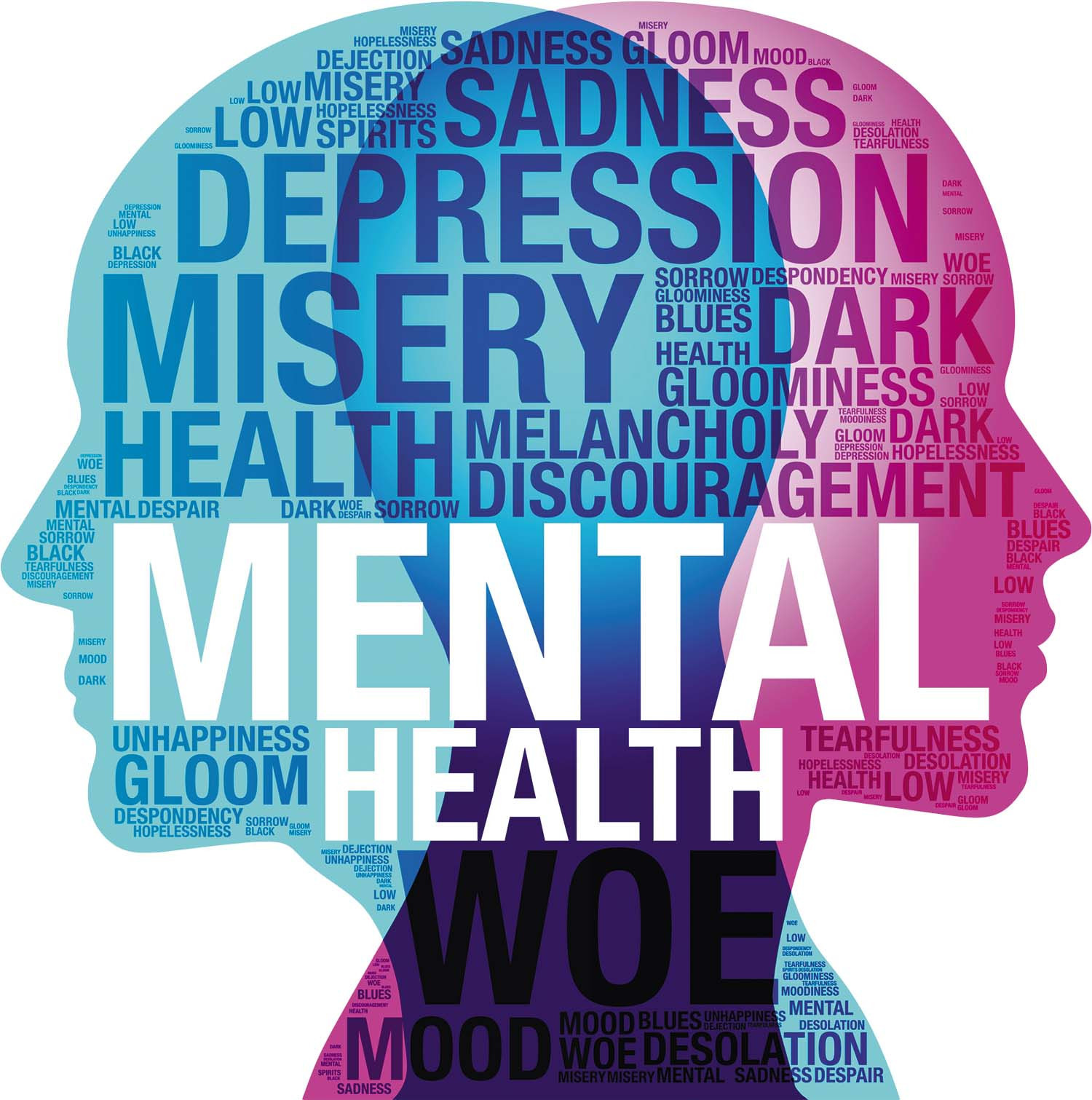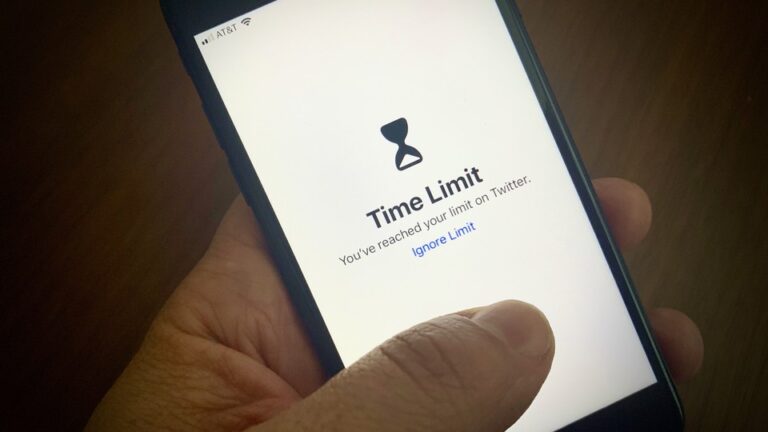Screen Time Unplugged: Finding the Balance in a Digital World

The Impact of Excessive Digital Use on Mental and Physical Health

Excessive digital use has become increasingly prevalent in today’s society, and its impact on mental and physical health cannot be overlooked. One of the major concerns is the effect on mental well-being. Research suggests that spending excessive time online can contribute to feelings of depression, anxiety, and loneliness. The constant exposure to social media, where people often highlight their best moments and achievements, can lead to feelings of inadequacy and low self-esteem. Moreover, the addictive nature of digital devices and the constant need for instant gratification can disrupt sleep patterns, leading to fatigue and exhaustion.
In addition to the mental health implications, excessive digital use can also have adverse effects on physical health. Sedentary behaviors associated with prolonged screen time, such as sitting for extended periods and lack of physical activity, can lead to weight gain and increased risk of obesity-related diseases. Moreover, the blue light emitted by digital screens can disrupt sleep patterns and negatively impact the quality of sleep. This can further contribute to fatigue, diminished cognitive function, and impaired physical performance. It is crucial to recognize the potential consequences of excessive digital use on both mental and physical well-being and take steps to mitigate these risks.
Strategies for Setting Boundaries with Technology
Technology has become an integral part of our lives, from checking emails to scrolling through social media feeds. While these advancements have undoubtedly brought convenience and connectivity, it is essential to establish boundaries to maintain a healthy relationship with technology. Setting boundaries allows us to regain control over our lives and prioritize our mental and physical well-being.
One effective strategy for setting boundaries with technology is to establish specific time limits for its use. For instance, allocating a certain amount of time each day for screen activities can help prevent excessive usage. This can be further supported by leveraging phone settings and applications that allow you to monitor and restrict screen time. By being mindful of the time spent on digital devices, individuals can strike a balance between work, personal life, and leisure activities, reducing the negative effects that excessive digital use may have on mental and physical health.
Another crucial aspect of establishing boundaries with technology is setting aside device-free zones or times. For example, designating specific areas in your home, such as the dinner table or bedroom, as device-free zones can promote better communication and foster healthier relationships with family and friends. Similarly, setting specific times of the day or week as technology-free can provide an opportunity for individuals to engage in alternative activities, such as reading, exercising, or pursuing hobbies. This intentional break from the digital world allows for relaxation, creativity, and focused attention on different aspects of life, nurturing a more balanced and fulfilling lifestyle.
By implementing these strategies, individuals can regain control over the role technology plays in their lives, fostering healthier habits and prioritizing overall well-being. While it is challenging to adapt to a technology-driven society, setting boundaries is an important step towards reclaiming agency and maintaining a healthy relationship with digital devices. .
Exploring the Benefits of Unplugging from Screens
In today’s digital age, where screens are seen as an essential part of our daily lives, it’s easy to overlook the potential benefits of unplugging from technology. However, taking a break from screens can have numerous positive effects on both our mental and physical well-being.
One of the major benefits of unplugging from screens is the reduction in mental stress. Constant exposure to screens, whether it be from smartphones, tablets, or computers, can lead to information overload and a constant barrage of notifications and distractions. By disconnecting from screens, we give our minds a much-needed break and allow ourselves to refocus and recharge. Research has shown that unplugging from screens can improve sleep quality, reduce anxiety and depression, and increase overall mental clarity and well-being.
On a physical level, unplugging from screens can also have positive effects. Excessive screen time is often associated with sedentary behaviors, such as sitting for extended periods and a lack of physical activity. By taking a break from screens, we are more likely to engage in activities that promote movement and exercise, which can have a myriad of health benefits. Additionally, reducing screen time can also help alleviate eye strain and other physical discomforts associated with prolonged screen use.
The benefits of unplugging from screens are undeniable, and incorporating regular screen-free time into our lives can have a profound impact on our mental and physical health. It’s important to remember that technology should serve as a tool to enhance our lives, rather than consume them. By setting boundaries and finding alternative activities to replace screen time, we can cultivate a healthier relationship with technology and reap the benefits of unplugging.
Finding Alternative Activities to Replace Screen Time
Engaging in alternative activities to replace screen time can have numerous benefits for our overall well-being. When we constantly rely on screens for entertainment and information, we may find ourselves becoming sedentary and disconnected from the physical world around us. By exploring other activities, we can not only reduce our screen time, but also discover new hobbies and interests that promote physical, mental, and emotional health.
One alternative activity that can be particularly beneficial is participating in outdoor recreational activities. Spending time in nature has been shown to reduce stress levels, improve mood, and increase physical activity. Whether it’s going for a hike, biking through trails, or simply taking a leisurely walk in the park, being outdoors allows us to reconnect with nature and find solace away from the constant stimuli of screens. Additionally, outdoor activities often provide opportunities for social interaction, whether it’s joining a sports league or simply enjoying the company of friends and family during a picnic or outdoor gathering. By prioritizing outdoor activities, we can not only reduce screen time, but also enhance our overall well-being.
In addition to outdoor activities, engaging in creative pursuits can be a fulfilling way to replace screen time. Activities such as painting, drawing, writing, or playing a musical instrument allow us to tap into our creative side and express ourselves in unique ways. Creativity has been found to have numerous benefits, including reducing stress, improving problem-solving skills, and enhancing overall mental well-being. By setting aside time to pursue creative activities, we can stimulate our minds and foster a sense of accomplishment and fulfillment. Whether it’s taking up a new hobby or revisiting a forgotten passion, incorporating creative pursuits into our lives can provide a meaningful alternative to excessive screen time.
Fostering Healthy Relationships in a Digital Era
In today’s digital era, fostering healthy relationships can be a challenge. With the constant presence of smartphones and social media, it’s easier than ever to be connected yet disconnected from those around us. The screen time that has become an integral part of our lives can interfere with our ability to truly connect with others, leading to feelings of isolation and a lack of genuine human interaction.
To foster healthy relationships in a digital era, it is important to set boundaries with technology. Designate specific times or areas in your life where digital devices are not allowed, such as during meals or when spending quality time with loved ones. By prioritizing in-person interactions and creating a tech-free zone at certain times, you can strengthen your relationships and deepen meaningful connections. Additionally, make an effort to be fully present when you are with others, giving them your undivided attention and actively listening to what they have to say. This simple act can go a long way in fostering open communication and building strong relationships.
Addressing the Challenges of Digital Distractions in Education and Work
In today’s digital age, the prevalence of digital distractions is becoming a growing concern in educational and work settings. With the increasing availability and accessibility of technology, it has become all too easy for students and employees alike to get easily sidetracked by social media, online games, and other digital temptations. This constant barrage of distractions can have detrimental effects on both learning and productivity, making it essential to address these challenges head-on.
One of the key challenges in navigating digital distractions in education and work is finding ways to maintain focus and concentration amidst the ever-present allure of the digital world. One effective strategy is to establish clear boundaries and create a designated digital-free zone or time period. By designating specific times or spaces for uninterrupted work or study, individuals can minimize the likelihood of succumbing to distractions and enhance their ability to stay focused. This could be as simple as setting aside a distraction-free hour each day or designating certain areas as “technology-free zones” in schools or workplaces. By actively incorporating these measures into our routines, we can create an environment that supports productivity and minimizes the impact of digital distractions.
• Establish clear boundaries and create a designated digital-free zone or time period
• Set aside a distraction-free hour each day for uninterrupted work or study
• Designate certain areas as “technology-free zones” in schools or workplaces
The Role of Parents in Managing Children’s Screen Time
In today’s digital age, parents play a crucial role in managing their children’s screen time. The excessive use of digital devices can have a significant impact on children’s mental and physical health. It is essential for parents to set boundaries and guide their children in finding a healthy balance between technology and other activities.
Research has shown that excessive screen time can contribute to various health issues in children, including obesity, sleep problems, poor attention span, and even mental health disorders such as anxiety and depression. Therefore, parents need to be proactive in monitoring and limiting their children’s screen time to ensure their overall well-being.
One of the strategies parents can employ is setting clear rules regarding screen time usage. This can include specifying the duration and times during which screens are allowed, as well as the types of activities that are permitted. By establishing consistent expectations, parents can help their children develop healthy habits and minimize the negative effects of excessive device use.
Additionally, parents can encourage alternative activities to replace screen time. Engaging children in physical activities, hobbies, and interactive play can not only reduce their dependency on digital devices but also promote their physical and cognitive development. It is essential for parents to provide a range of stimulating options and be actively involved in these activities to foster a strong parent-child relationship and ensure their children’s well-rounded growth.
In conclusion, parents play a crucial role in managing their children’s screen time and mitigating the potential negative effects of excessive digital use. By setting clear boundaries and promoting alternative activities, parents can help their children establish a healthy relationship with technology and prioritize their overall mental and physical well-being.
Nurturing Creativity and Imagination in a Digital World
In today’s digital age, where screens are omnipresent, nurturing creativity and imagination has become more important than ever. While technology offers endless possibilities and resources, it can also hinder the development of these crucial skills in children and adults alike.
Creativity and imagination are essential for problem-solving, innovation, and critical thinking. They allow individuals to explore new ideas, think outside the box, and approach challenges with a fresh perspective. However, excessive reliance on screens and digital devices can limit opportunities for creative thinking by providing instant answers and pre-packaged information. This over-reliance on technology not only stifles imagination but also prevents individuals from developing their own unique ideas and solutions. To foster creativity and imagination in a digital world, it is essential to strike a balance between screen time and activities that encourage free thinking, exploration, and self-expression.
Cultivating Mindfulness and Well-being in the Age of Screens
In today’s digital age, screens have become an integral part of our lives. Whether it’s our smartphones, tablets, or computers, we are constantly connected and engaged with technology. However, this constant exposure to screens can have a detrimental impact on our mindfulness and overall well-being.
Research has shown that excessive screen time can lead to increased levels of stress, anxiety, and depression. The constant barrage of information and stimulation can overwhelm our senses, making it difficult to relax and be present in the moment. Additionally, the blue light emitted from screens can disrupt our natural sleep patterns, further affecting our mental and physical health.
To cultivate mindfulness and well-being in the age of screens, it’s important to set boundaries and establish screen-free periods throughout the day. Designating specific times to unplug and engage in activities that promote relaxation and stress reduction, such as meditation, yoga, or simply going for a walk in nature, can help restore balance and enhance our overall well-being. Additionally, incorporating digital detoxes or screen-free weekends into our routines can provide a much-needed break from the constant stimulation of technology, allowing us to reconnect with ourselves and those around us.
By consciously managing our screen time and prioritizing activities that promote mindfulness and well-being, we can navigate the digital age more effectively and find a healthier balance between technology and our overall well-being.
The Importance of Digital Detox for Work-Life Balance
In today’s fast-paced, technology-driven world, achieving a healthy work-life balance can seem like an uphill battle. The constant presence of digital devices and the allure of social media and online entertainment can easily consume our time and attention, often at the expense of our personal relationships and overall well-being.
A digital detox, which involves consciously unplugging from technology for a designated period of time, has emerged as a valuable tool in reclaiming work-life balance. By temporarily disconnecting from the digital realm, individuals can create space for self-reflection, rejuvenation, and meaningful connections with loved ones.
Research suggests that excessive digital use can lead to feelings of burnout, stress, and even depression, as individuals become increasingly dependent on the constant stimulation and validation that technology provides. By consciously disconnecting from these digital distractions, individuals can reduce their stress levels, improve their mental clarity, and ultimately restore a sense of balance to their lives.”
With technology becoming an integral part of our daily routines, it’s crucial to recognize the importance of setting boundaries and creating intentional periods of digital detox. This could involve implementing a device-free hour before bedtime or designating specific times during the day when screens are turned off. Through these deliberate actions, individuals can break free from the grip of constant connectivity, allowing themselves the opportunity to recharge and prioritize their well-being.
While the benefits of a digital detox may initially seem daunting, taking small steps towards unplugging can have profound effects on work-life balance. During a digital detox, individuals may find themselves rediscovering forgotten hobbies or engaging in activities that promote overall well-being, such as exercise, meditation, or spending quality time with loved ones. By prioritizing these offline experiences, individuals can create a healthy work-life balance that fosters personal growth and happiness.
In conclusion, the importance of a digital detox for work-life balance cannot be overstated. By consciously disconnecting from technology, individuals can regain control over their time, reduce stress levels, and cultivate meaningful connections. Incorporating regular periods of digital detox into our lives is a powerful strategy for reclaiming a healthy work-life balance in the digital age.
Building a Sustainable Relationship with Technology
In today’s digital age, building a sustainable relationship with technology has become increasingly important. With the constant bombardment of screens and information, it is crucial to establish a healthy balance between our digital lives and the real world. This not only benefits our mental and physical well-being but also allows us to connect more deeply with ourselves and those around us.
One key aspect of building a sustainable relationship with technology is setting clear boundaries. This involves defining specific times and spaces where technology is allowed and where it is not. For example, designating certain hours of the day as “screen-free” time can help to break the cycle of constant digital consumption. Creating technology-free zones, such as the bedroom or dining area, can also promote healthier habits and encourage more meaningful interactions with loved ones. By consciously setting these boundaries, we can regain control over our technology usage and prevent it from dominating our lives.
Furthermore, it is important to find alternative activities to replace excessive screen time. Engaging in physical exercise, pursuing hobbies, or spending time outdoors can all provide a much-needed break from the digital world. Not only do these activities enhance our overall well-being, but they also allow us to truly disconnect and recharge. By finding activities that bring us joy and fulfillment outside of technology, we can reduce our dependence on screens and create a more sustainable balance in our lives.
Building a sustainable relationship with technology requires conscious effort and self-awareness. By setting clear boundaries and finding alternative activities, we can regain control over our digital lives and foster a healthier, more balanced relationship with technology. In the next section, we will explore specific strategies for cultivating mindfulness and well-being in the age of screens.
What is the impact of excessive digital use on mental and physical health?
Excessive digital use can have negative effects on both mental and physical health. It can lead to increased stress, anxiety, and depression, as well as physical issues such as eye strain, headaches, and poor posture.
What are some strategies for setting boundaries with technology?
Setting boundaries with technology includes establishing designated times for device use, creating tech-free zones in the home, and using tools like screen time limits and app blockers. It is important to prioritize activities and relationships that do not involve screens.
What are the benefits of unplugging from screens?
Unplugging from screens can provide numerous benefits, including improved sleep, increased productivity, better focus and concentration, stronger interpersonal relationships, enhanced creativity, and reduced stress levels.
How can alternative activities replace screen time?
Engaging in alternative activities such as exercising, reading, spending time outdoors, pursuing hobbies, socializing face-to-face, and practicing mindfulness can help replace screen time and provide a healthier balance in life.
How can healthy relationships be fostered in a digital era?
Healthy relationships in a digital era can be fostered by setting aside dedicated device-free time for meaningful interactions, practicing active listening, maintaining open and honest communication, and demonstrating empathy and understanding in both online and offline interactions.
How can the challenges of digital distractions in education and work be addressed?
The challenges of digital distractions in education and work can be addressed by implementing strategies like time management techniques, utilizing productivity apps, creating distraction-free workspaces, and establishing clear guidelines and expectations for device use.
What is the role of parents in managing children’s screen time?
Parents play a crucial role in managing their children’s screen time. They can set limits, establish screen-free zones, encourage physical activity and outdoor play, provide alternative activities, monitor content, and promote open conversations about responsible technology use.
How can creativity and imagination be nurtured in a digital world?
Creativity and imagination can be nurtured in a digital world by encouraging activities that inspire creativity, such as art, music, writing, and imaginative play. Limiting screen time and providing opportunities for unstructured play can also stimulate creativity and imagination.
How can mindfulness and well-being be cultivated in the age of screens?
Cultivating mindfulness and well-being in the age of screens involves practicing mindfulness techniques, such as meditation and deep breathing, taking regular breaks from screens, fostering self-awareness, setting intentions, and prioritizing self-care activities.
Why is digital detox important for work-life balance?
Digital detox is important for work-life balance because it helps individuals disconnect from work-related stress and distractions, allowing for quality time with family and friends, relaxation, and rejuvenation. It promotes a healthier balance between work and personal life.
How can a sustainable relationship with technology be built?
Building a sustainable relationship with technology involves setting boundaries, practicing self-discipline, prioritizing offline activities, being mindful of screen time, regularly taking breaks from screens, and continuously evaluating and adjusting one’s technology use habits.






